Art & Exhibitions
Carpenters Workshop Gallery Brings High Design Art to New York
Lombrail and Gaillard follow up on their successful spaces in London and Paris.

Lombrail and Gaillard follow up on their successful spaces in London and Paris.

Jean Rafferty

When French art dealers Julien Lombrail and Loîc Le Gaillard opened their first Carpenters Workshop Gallery (CWG) space in an old carpenter’s workshop in London’s Chelsea in 2006, they soon abandoned dealing in contemporary art to focus on the burgeoning trend in Design Art.
Although Design Art has been much misunderstood ever since the late Pierre Staudenmeyer first launched design limited editions in his pioneering Parisian Galerie Néotu in the 1980s, CWG’s move has been a stunning success, and has put them on the rarefied level of renowned Design Art galleries such as David Gill in London and Didier and Clemence Krzentowski’s Galerie Kréo in Paris (and now London).
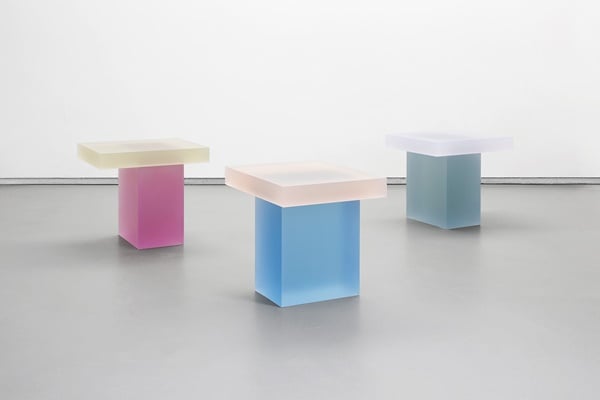
Image: Courtesy of Carpenters Workshop Gallery.
In less than a decade, CWG has emerged as one of the most internationally active galleries. Now, a new outpost in midtown Manhattan, which opens November 10, will inaugurate Carpenters Workshop Gallery New York in the spectacular spaces of the Takashimaya building’s two top floors at 693 Fifth Avenue.
“We’re all in – like poker. We love a challenge,” Lombrail, 38, confirmed in a phone interview. “At the same time, we already do 40 percent of our business with U.S. clients.
Producing exciting limited editions and unique pieces of what they call “functional sculpture,” or “furniture that is highly collectible,” the duo are the paradigm of Design Art, original designs that could be considered fine art without inherently functioning as a seat, a table, or lighting.

Image: Courtesy of Carpenters Workshop Gallery.
And the French guys get around. Along with participation in sixteen annual art and design fairs—from New York’s Salon of Art and Design to Abu Dhabi’s Art Fair and including the prestigious Paris Biennale where they were the solitary design exhibitor in 2014—the gallery excels in exciting collaborations with a singular slate of artists that includes Wendell Castle, Atelier Van Lieshout, Sebastian Brajkovic, Robert Stadler, Vincent Dubourg, Rick Owens and Studio Job. Results show up in such memorable exhibitions as the Campana Brothers’s Sushi when the Paris gallery was totally repainted in blue/green sea colors to spotlight the works and Random International’s “Before the Rain” show also at CWG Paris, which preceded the group’s celebrated “Rain Room” show at MoMA.
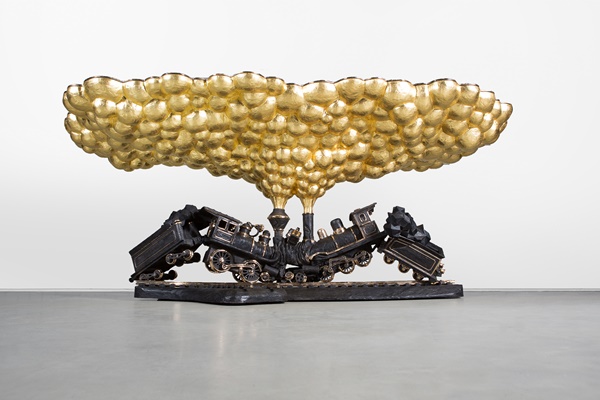
Image: Courtesy of Carpenters Workshop Gallery.
In less than a decade, CWG has expanded into prominent new spaces: first in 2008, to a second London address in Mayfair just as the neighborhood was shedding its classic chic for contemporary cool; then, in 2011, to a 6,450-square-feet Paris space in the arty Marais near the Centre Pompidou.
Factor in a first, the new 86,000-square-feet artisanal workshop that CWG unrolled this spring near the Paris Charles de Gaulle airport at Roissy. It fosters the kind of decorative arts collaboration between gallery artists and in house skilled craftsmen that disappeared with the advent of design. Working with the best craftsmen and the best artists also fosters high quality. As Lombrail will tell you, “Perfect pieces sell very quickly.”
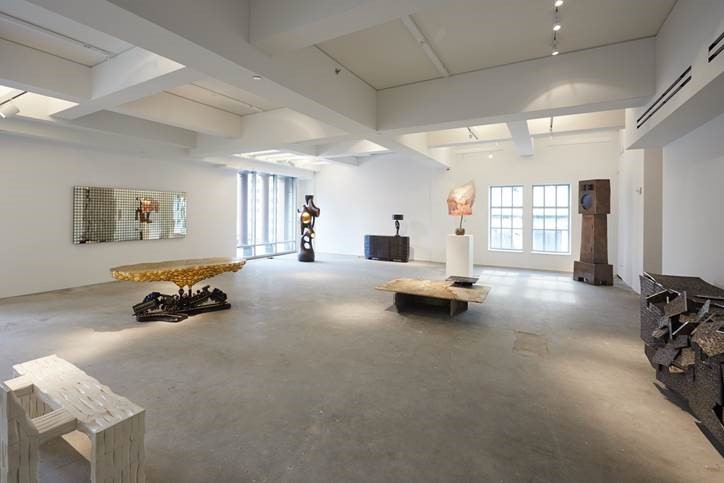
Image: Courtesy of Carpenters Workshop Gallery.
The opening show in New York will spotlight the stars of design art in their stable—both rising and confirmed talents. It will include such unexpected pieces as Ingrid Donat’s bronze and silver Tribal table, a Smoke Steinway by Maarten Baas and Vincent Dubourg’s bronze and stone coffee table along with the work of three newly-signed talents: Nacho Carbonell’s mesh and concrete lamp, Vincenzo de Cotiis’s low table, and a new edition of Wonmin Park’s irresistible pastel resin tables, desks and stools. You can also count on showstoppers from Studio Job and Random International.
France’s leading morning paper, Le Figaro, recently noted, “One shops for design at Carpenters as one shops for contemporary art at Gagosian.”
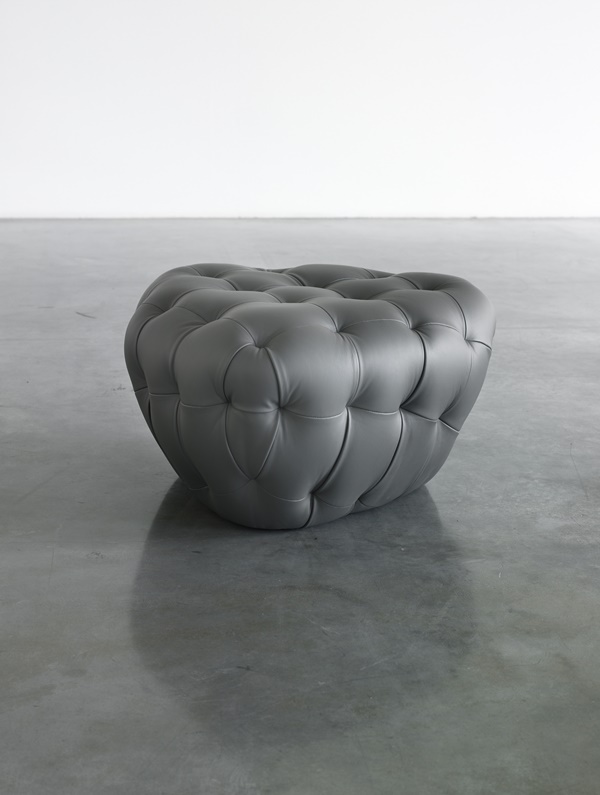
Image: Courtesy of Carpenters Workshop Gallery.
CWG’s extraordinary pieces have garnered celebrity clientele including Brad Pitt, Roman Abramovich and Dasha Zhukova, fashion designers Tom Ford and Jean-Paul Gaultier, and architect Peter Marino.
Just as essential to their vision are the new interiors. The showstopper on the spot is the soaring space on the 20th floor. “There is an incredible penthouse with almost forty-foot high ceilings and enormous windows,” Lombrail said. “Two terraces have views of Central Park and MoMA’s garden. We will decorate it as a collector’s apartment with living and dining rooms.”
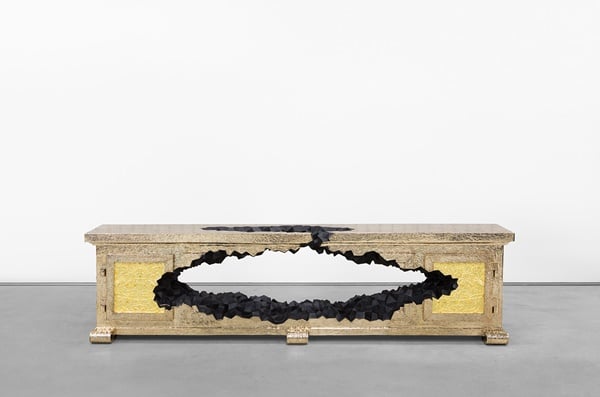
Image: Courtesy of Carpenters Workshop Gallery.
Le Gaillard, 44, explained why. “We came to the conclusion that the white box is pretty much a has-been way of presenting work,” he said. “You have to give an atmosphere, to show how an artwork can be lived with in a domestic environment. I think people want something a little more bespoke, to be able to engage with the pieces on a more down to earth level.”
Unlike their London and Paris galleries, sited in traditional art world haunts, they eschewed Chelsea or the Upper East Side in favor of less arty Midtown. But that’s not to say they are not keen on being close to art.
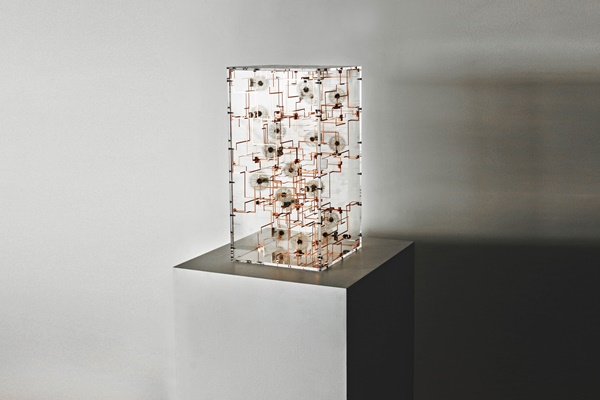
Image: Courtesy of Carpenters Workshop Gallery.
We wanted to be in a different place because we do things differently,” Lombrail explained. “The building is very elegant, central and easy, a few blocks from Christie’s and MoMA. And it’s close to the offices of the interior architects— Peter Marino, Robert Couturier, Tony Ingrao and Jacques Grange—whom we work with for our clients on big interior architectural projects.”
The 19th floor has been earmarked as the gallery. “There are large granite columns (that front on the avenue) and thirteen-foot-high ceilings where we will do presentations and exhibitions,” Lombrail said.
“That is why we have second spaces that are more private, like a home environment, where art is not just about showing art,” Le Gaillard added, “but engaging in a total lifestyle of how to live with art, or live period.”